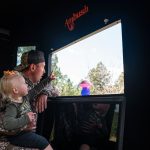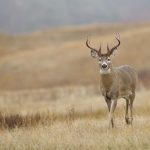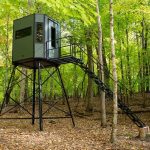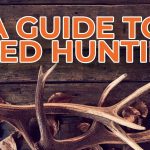6 Old-School Deer Hunting Tips
Every hunter has a plan for the next deer season. They know where they will put their blind, what deer they are after, maybe even the age and size of the deer they have been tracking. Most hunters even pick out a name. These skills and traditions go way back. Do you remember the beginner tools you were taught by your Grandfather in the hunting blind? Even though technology has developed to help the hunter, the old-school deer hunting tips we were taught as kids are still relevant. Here are our top 6 old-school deer hunting tips.
1. Don’t Rely on a Rangefinder
The first old-school hunting tip – don’t rely on a rangefinder. When practicing shooting your gun or bow, measure out the distances before shooting. While shooting, note what the distance feels like. Also, you can take guesses to practice distances. Set up a random distance away from your target or other object and guess the distance. You can then check your guess with your rangefinder. If you were off, figure out what went wrong, adjust your sighting method and duplicate the process. You will become accurate without a rangefinder before you know it.
2. Time Deer Tracks
Our second old-school hunting tip is to time deer tracks. When you find a deer track in the snow, push your bare fist into the snow next to it. Then, examine how distinct the outline and edges are. If the track is fresh, it will match your fist. Also, you can compare them to the touch. The inside walls of the print you made with your fist should collapse with pressure, just like a fresh track. If the vertical walls of the track are hard, the older the track is. Both your fist and a deer hoof give off heat, which causes the snow to melt. As time goes on, the melted snow freezes and hardens again.
3. Size Deer by Tracks
Third, you should pay attention to the size of deer tracks. Mature bucks will leave tracks measuring 5 to 6 inches, from the toe tip to the back of the dewclaw. An adult doe or immature buck rarely leaves a track more than 4 inches in length. Also, you should pay attention to the width of the track. If the track is from a buck and measures close to 2.5 inches across, it is most likely mature and ready to be mounted on your trophy wall.
4. Size Deer Antlers
Our next old-school deer hunting tip is to learn how to size deer antlers. When you find evidence of a buck, in the form of a rub on brush or tree trunks, measure from the middle of the main rub to the furthest tine mark, then double it. It’s logical to assume that the buck’s rack is at least this wide.
5. Determine – Buck or Doe
Our fifth tip is to determine if tracks are from a buck or doe by looking for yellow snow. A doe will stop walking and squat down where urinating. Their urine mark is left in a straight line between their back hoof prints. Bucks will urinate while walking, creating a trail of urine. If a buck does stop when urinating, the mark will be slightly in front of the back hoof prints and create a hole in the snow. Also, bucks are more likely to drop dung while on the run, creating a line instead of a group.
6. Know if a Buck is Active
Finally, know if a buck is active by placing a stick into the trail. Most animals will leave it alone, but a whitetail buck will move it and even kick it off the trail. If you see that the stick has been moved, it is likely a buck is in the area.






